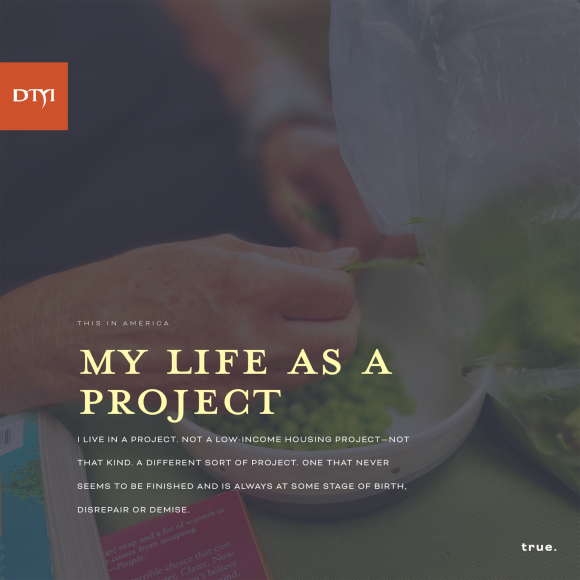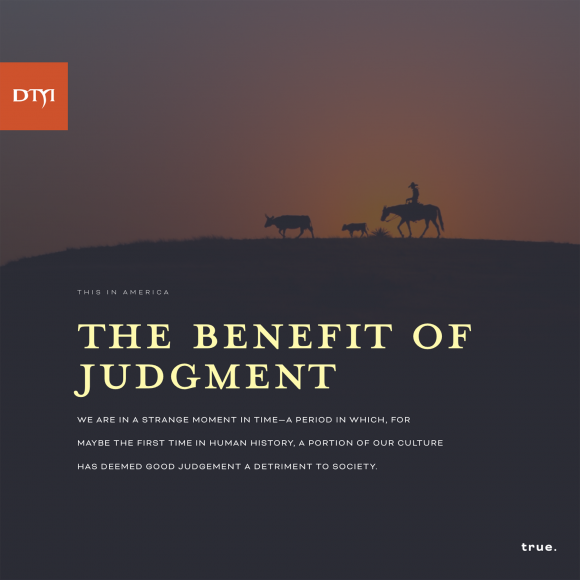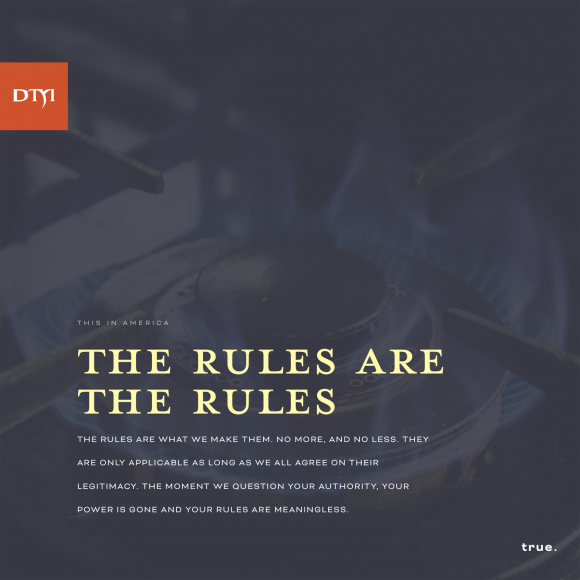Jane wanted chickens. Live ones.
“Four of them,” she told me matter-of-factly. She thought about it some more then said, “No six. Yes, six. And red.”
“Six red chickens,” I repeated, not looking up. We were having lunch outside, as it was an unseasonably warm day. I was trying to decide what I wanted to eat knowing full well that I would order the same thing I always did. I like to think that I want something new; that I truly want new experiences, but the truth is like most people, I’m happy in my usual ruts. They’re comforting the way an old shirt is comforting.
“Yes,” Jane said, “chickens.” She said chickens as if that was the end of the conversation. I guess it was. Jane’s my wife.
To be honest, I’d never really given chickens a lot of thought. I like to eat them – I like an omelet now and again, but that’s about it. When I met Jane, she didn’t even eat chicken. She was a vegetarian of sorts. She didn’t have anything against eating animals; she just found that she felt better when she stuck to plants and fish. Now she wanted to raise chickens.
For Sale: Large four bedroom house. Two and a half bath. Hardwood floors. Yard with great gardening potential. Previously a whorehouse.
Of course it’s not like one day she just looked up and said, “Honey. Pick me up a few live chickens on the way home.” I mean I wasn’t worried about finding her hovered over a little alter in our living room chanting in Spanish. We were buying a 280 year-old house in the country and she wanted chickens. It seemed reasonable enough.
The truth is, Jane had always dreamed of owning chickens. “You know,” she once told me, “just a few running around the yard while I’m gardening or hanging clothes.” This did not seem to me to be a very sordid fantasy, nor anything that would have any real harmful effect on me, so I agreed. Besides, where we were moving, no one thought it particularly odd to want a few chickens hanging about.
The house we were buying was in a small town called Goshen, about twenty minutes north of Cape May, New Jersey. The owner, Mrs. Payne told us that her late husband had done research on the house and that it had once been a tavern and stagecoach stop in the mid 1800’s. It had also functioned as a brothel at some time or another but this we learned from neighbors, and then only after we had already moved in. To some people this fact might have been disturbing. I thought it was the most interesting part and found it curious that it had not been part of the listing.
For Sale: Large four bedroom house. Two and a half bath. Hardwood floors. Yard with great gardening potential. Previously a whorehouse.
How could you pass that up? I figured it was the closest I’d ever get to a real brothel. Besides, what fun is buying any old house when you could live in an old whorehouse? I imagined Norm from This Old House walking through it saying, “Yes Jim. As you can see, this room is was where the Johns waited and over here in the front bedroom you can see where all that bouncing up and down has weakened the floor. We’ll be working on that next week.”
The house sat on Route 47, which is a winding two-lane road that, until the Garden State Parkway was built, was the main thoroughfare for vacationers traveling between Philadelphia and Cape May. Our road dead-ends at what was once a large ship-landing on the Delaware Bay. It’s been many years since a ship could pull up to the end of our road and the marsh has since crept in leaving only a narrow, winding channel. The bay is now about two miles out. To this day, however, you can still see the pilings from the old dock at low tide.
Goshen, as it turns out, with its then seemingly endless supply of Cedar, was quite the successful shipbuilding town. So, with sailors and shipbuilders on one side, and rich Philadelphians passing through on their way to vacation in Cape May on the other, the local tavern and stagecoach stop was probably a pretty busy place indeed. It even had a name: The Tavern House.
I began to imagine the sign we would have made. It would be a carved, wooden sign with The Tavern House in big gold letters and a red rooster in the middle.
The fly in the ointment, as it were, was that we were moving at the end of February and the chicks we had ordered at the local feed store would arrive at the end of March. This did not give me a great deal of time to acquire a chicken coop. First off, I wasn’t sure whether we wanted to buy something or build something. Originally, I thought we might be able to convert a big doghouse or maybe a small shed but after looking at several of these I concluded that I could probably do a better job myself. I still needed to know a little more about chickens though.
In the weeks prior to packing and closing on the house, we attempted to learn as much as we could about chickens. We started out by doing a little field research. That is to say, we went to the zoo and watched the chickens.
Cape May County has a pretty good zoo for being a beach-resort town. They have most of the favorites: tigers, bears, a few giraffe, buffalo, zebra, ostriches, and even monkeys. They also have ‘farm animals.’ These are animals you’d normally find in any children’s zoo but I can’t imagine what kind of farm they might come from. There are fancy chickens that look like they’re ready to go to a Victorian ball, Vietnamese Pot-bellied pigs, Llamas, and a few goats. I guess cows and ordinary pigs just don’t have the same kind of draw in a rural community.
As far as I can tell, this is where the zoo makes most of its revenue.
Strategically stationed around the perimeter of the farm-animal exhibit are gum ball machines filled with feed. Atlantic City is just forty-five minutes up the Parkway and if you’ve ever seen little old ladies fight over slot machines, you’ll understand why they don’t let anyone younger than eighteen in. Those old biddies wouldn’t stand a chance against your average first-grader.
For your quarter, you get about twelve kernels of compressed feed pellets that look curiously like rabbit turds. The child will then take this little handful of gold over to the animal of their choice and either throw it at its head or drop the whole load the minute the poor, hungry animal tries to eat it. This usually means it drops on the wrong side of the fence so that the animal can’t reach it. Which doesn’t faze the child, who simply goes back to Dad and asks for more quarters. After all, what they really want to do is get the feed from the gumball machine. They feed it to the animals because that’s what they know we adults want to see. Besides, they’ve been told at least a hundred times not to eat food that’s been dropped on the ground.
This setup is brilliant. The animals don’t spoil their appetite on vending machine junk food and the children have a rip-roaring time. Meanwhile, the chickens eat all the pellets dropped on the other side of the fence as soon as the noisy children clear out. Even the parents make out well since the zoo doesn’t charge admission and this is a far more interesting, if not a more educational, use of a quarter than a video game at the arcade. Of course if the zoo people are smart, the gum ball machines are filled with chicken feed in the first place. At the very least, we learned what chickens at the zoo eat.
In the end, we didn’t actually learn a great deal about chickens, but we liked the look of them and enjoyed watching them strut around the yard. Our field research in hand, we headed for the library.
When I was a kid, my parents decided that our education wouldn’t be complete without a set of World Book Encyclopedias. These were bought no doubt from a door-to-door salesman and sold personally to my father. My father is by nature the cheapest white man in North America. This doesn’t stop him when it comes to innovative gadgets. He once bought a pair of scissors that could cut a penny. This was demonstrated by the salesman who sold it to him. What he learned later was that it was useless when it came to cutting ordinary things like paper or fabric but it was hell on small coins.
Along with the twenty or so volumes of World Book Encyclopedia came two huge dictionaries. One for A-K and one for L-Z. Anytime we had a question, my father would glibly announce, “Go look it up in the World Book.” The same held true if we wanted to know how to spell something. There were no easy answers in our house and research became a big part of our educational process. So did quality plagiarism. I learned early on that if the school I was attending didn’t happen to have the World Book Encyclopedia, but say, only the Encyclopedia Britannica, you could plagiarize the hell out of the World Book. With a few opening sentences of my own and fine closing, I could fill the middle with fantastic information taken almost directly from the World Book. I owe a lot to the people at World Book and to them I am truly grateful.
In addition to his devotion to the World Book, my dad was also, and still is, a big believer in the free library. So we often made weekly trips to the library where we spent hours and left with armfuls of books. If you couldn’t find it at the library, you probably didn’t need it, was my father’s attitude.
So Jane and I went to the library. We checked out nearly every book they had on the subject: from raising chicks to building coops. Much of the stuff on chickens had to do with raising large numbers of them, dealing with cannibalism, or killing them cleanly. We just wanted to raise six hens, maybe a rooster and get some fresh eggs. We did, in the end, learn what to expect from our chickens. Like when they would begin laying (5-6 months), how many eggs they would lay (about 18/month), how long they would lay productively (two years), what to feed them (chicken feed) and what they needed in terms of housing.
From reading the various books, I had gotten a general feel for what a standard coop contained. Several of the books referred to ‘backyard’ chickens or ‘small flocks’ by which they meant less than two hundred. The coops in these books were small barns designed to hold anywhere from fifty to two hundred chickens. We were talking about six chickens. So I went back to the library and found some books on building small sheds. These were far more helpful since a small shed was more of what I had in mind and the designs were for people who wanted an appealing structure to put their garden tools in. That is to say, they were really more ornamental than any chicken farmer would ever dream. This was what I had been looking for. A well-designed chicken coop that looked a lot like a Victorian garden shed. Soon after I began, Jane began referring to it as the Chicken Mansion.
The first time I saw the chickens, they weren’t but two days old having been shipped via UPS from Iowa, peeping all the way. The Payne Sisters, named after the people who’s home we’d bought, were Rhode Island Reds, bright reddish-yellow balls of fuzz from which grew two feet.
For the next three weeks they lived in a cardboard box in our living room. The floor of the box was covered with shredded newspaper and contained a gallon watering jug and a small chick feeder. It was covered on top with chicken wire, not so much to keep them in as to keep the cat from having a midnight snack. Attached to the top of the box was a clamp-on lamp of the sort you might find in a mechanic’s garage. It was outfitted with a large heat lamp that gave off a warm, red glow. In the weeks following, when I arrived home, the first thing I would see would be the red glow from the front living room window, somehow suggesting that these ladies, who now inhabited the front parlor of our whorehouse, were working much harder than eating, napping and shredding a little newspaper.
Now reading books in the library was all fine and well, but eventually I’d have to actually build the coop. Baby chicks grow quickly and after a few weeks it was clear that they weren’t going to be able to live very long in our living room. They were going to need outdoor accommodations. And soon.
As I said, I had looked into converting a doghouse or a ready-made shed but decided against it. The truth is, I’m a graphic designer by trade – I ought to be able to do this, I reasoned. My only fear was inexperience. I had just never built anything before.
I started by drawing my grand design on graph paper using several plans for garden sheds as a rough guide. Once I was happy with what I thought would be a very practical, yet classy chicken coop, I figured out what materials I would need and called in an order to the local lumber yard. If I had gone to Home Depot, I could have probably figured the whole thing out myself because, for the most part, I knew what everything was supposed to look like, but ordering over the phone to someone used to talking to lumberjacks, was going to be a little more difficult. So when I called, I started out by telling him that I was an idiot and was building a chicken coop.
“Uh-huh,” he said like this was his third call that morning from an idiot building a chicken coop.
“Well, basically I know what I want but I need a little help deciding on a few things. I was hoping maybe you could help me out.”
“Uh-huh.”
I pictured him gesturing to his buddies and switching me over to the intercom system to the entire lumberyard.
“Okay, first I need 10 sixteen foot 1×6″ tongue and groove pine boards and 2 10 foot boards.”
“This is for a chicken coop, right?” he asked.
“Yes.”
“Just checking.”
I gave him the rest of the materials and with some help figured out which nails I would need and how many, as well as the proper choice for the cedar shingles I was looking for.
“Cedar shingles?”
“Yes,” I assured him.
“This is for the chicken coop still?”
“Yes.”
“Well, we have some hand-cut cedar shingles. They ain’t all that straight though. It’s the kind the of thing you’d put on a dog house so I guess it’d be good enough for chickens.”
“How much are they?” I asked.
“Let’s see. A bundle will run you $6.50.”
“How much do think I’d need?”
“Depends.”
I waited for him to tell me what this depended on. He didn’t.
“Depends on what?” I finally asked.
“How big your roof is.”
“Oh, right. Four by eight. Single pitch.”
“Two bundles ought to do you.”
I was told the order would be delivered between 8 and 9 Saturday morning. The bill came to $252.38. These had better be some damn good chicken eggs, I thought.
Saturday morning came and at eight o’clock sharp I heard the sound of a truck backing up. I was still in bed so I jumped up, dressed quickly and went downstairs to sign for the load. A man was walking to the door and I remember thinking he looked a little old to be hauling wood. I wished him a good morning, signed for the order and followed him out to his truck. It appeared as if my load was the only order on his truck. I motioned to a spot in the back yard where I wanted him to put the lumber and he backed the truck up over the lawn to where I now stood. He crawled out of the cab, pulling on some old leather, work gloves and began undoing the thick web straps that held the lumber tightly in place. As soon as both straps were free he slid one end of the load out off the side of the truck’s bed. It was all stacked neatly and bound with metal strips. What he did next nearly gave me a heart attack. He grabbed the other side, gave a quick tug then jumped nimbly out of the way. The whole load, all two hundred and fifty-two dollars and thirty-eight cents worth, came crashing down onto the ground with a loud slap. I very nearly cried out. Of course the lumber wasn’t hurt, but I just assumed he was going to take it off the truck piece by piece and stack it neatly in a pile. In fact, the real reason I’d gone out with him to the back yard in the first place was that I figured I’d help this poor old man unload my lumber. I had no idea he was just going to push it off the edge.
Now if there’s one important lesson I’ve learned over the years, it’s that when venturing into uncharted territory, do so alone. You’re less likely to look stupid. This falls under the If A Tree Falls In The Forest And No One’s Around To Hear It clause. It’s bad enough that I didn’t know what I was doing, I didn’t need some jokester looking over my shoulder and telling me that I was doing it wrong.
I’ve also found that as long as I go slowly, think about what I’m doing before I do it, and measure everything twice before I cut, I pretty much do okay. All told, I built the coop over the course of two weekends with little or no snags. I learned a few things, of course and if I ever build another chicken coop, there will be some things I’ll do differently. But all in all, I was quite proud of my little achievement. Without a doubt, it was the best looking chicken coop I’d ever seen. I’ll spare you the actual details of the construction but suffice it to say, this coop could withstand hurricane-force winds. I built it with the notion that if I could build a small chicken coop properly, I could also manage a larger structure like the workshop/potting shed that Jane and I dreamed of. Therefore, I went to a lot of extra and unnecessary trouble in order to learn how to build a proper structure.
A week after the coop was finished, with the help of my sister-in-law’s boyfriend, I dug post-holes and put up a chicken wire enclosure surrounding the chickens. We also spread deer netting across the top to keep the chickens in and the hawks out. That night the chicks slept in their new home. They had upgraded from newspaper to wood shavings by now, but they still had their heat lamp. Each morning I would go out and open the little front door that folded down on hinges to become a ramp and they would spill out on top of one another.
For the next several weeks, Jane would find me sitting on a little folding seat in the middle of the chicken yard. It was spring and the weather was warming up. The sun would be shining, I’d have a beer in hand, and I’d just sit there and watch them run around the yard. They didn’t do a whole hell of a lot, but that was okay. I wasn’t doing much either according to Jane.
Now the way we figured it, if you’re going to live in the country and have chickens, you’ve got to have a rooster. The rooster IS living in the country. When we first told people we wanted chickens they would say things like, “Why?” Fifty years ago, people had chickens. No one asked them why. It was obvious enough, I suppose. Meat or eggs. What the hell else would you do with a chicken? I don’t think any of the people who asked us “why” were concerned with whether or not we were interested in them primarily for meat or eggs. They simply couldn’t fathom anyone wanting to own live chickens when you can buy perfectly good dead ones prepackaged in the grocery store for less than two dollars a pound. For that matter, you can buy a dozen eggs for a little over a dollar. Chickens indeed.
While it’s true that many of the people who were incredulous at the notion of our raising chickens were from the city, or at least not the country, even the country folk were a little perplexed when we told them we wanted a rooster but that we weren’t really interested in killing him for meat or in acquiring more chickens. In fact at one point we figured we’d get a rooster and simply get him castrated. A castrated rooster is called a capon. Once castrated, they fatten quicker and so make great roasters. We weren’t exactly sure who we were going to get to castrate him because “chicken castrator” wasn’t something we’d seen in the local newspaper’s classifieds. I offered to try to learn how but Jane informed me I’d be more likely to cut off his head by mistake or remove his appendix. I didn’t need any more tools anyway.
Regardless of whether or where we going to get his procedure done, we had to find him first. People who understood the purpose for chickens at least understood our desire for hens but when it came to our reasons for our rooster, even they were stumped.
“Why would you want a rooster if you don’t want more chickens,” one farmer asked my wife.
“We just want one,” my wife replied pleasantly.
“You know they crow all the time.”
“Yes. That’s part of the attraction.”
It was then he realized that he was dealing with someone who lacked all common sense. I should point out that I wasn’t even there.
“I mean all the time,” he continued. “Not just in the morning like on television. They crow at four in the morning and at four in the afternoon. Some crow all night.”
“That’s okay,” she said. “We just like the way they sound anyway.”
Needless to say, he shrugged and walked away. You just can’t reason with some people.
Later, we decided we did want more chickens and you can’t really tell the difference between a fertilized egg and a non fertilized egg unless you incubate them, so why not. They taste the same and are impossible to tell apart physically. Meanwhile the rooster gets to have a little fun. I don’t say that to sound sexist. The hen is obviously involved. She just doesn’t seem to be having that much fun. It looks more like she’s being pinned by a professional wrestler. Maybe someday hens may be liberated but until then it looks a lot more like duty rather than pleasure for the hen.
If you want fertilized eggs, you need approximately one rooster for every one hundred hens. Polygamy is very much alive and well in the chicken coop. And since roosters don’t lay eggs they aren’t really all that useful. Most people don’t want roosters. They want hens. Now I don’t know what they do with all the unwanted roosters, but we couldn’t find one for the life of us. All we wanted was one rooster. After all, we only had six hens. He would only be working part-time anyway.
Finally, we ran into a woman named Joyce at a friend’s party who said she had three, one-year old cocks and we could have all three if we wanted. We told her no thank you but we were already afraid that one rooster would leave our hens oversexed. One would be quite enough. She told us to come by the next week and we could pick one up. They weren’t Rhode Island Reds but beggars can’t be choosy. They did turn out to be beautiful Buff Cochins. Glorious gold-colored cocks with a large plume of tail feathers.
It just so happened that I had a dentist appointment that next week and my dentist is only a few doors away from where Joyce lives. I called her and asked if it would be all right if we picked up our rooster. She said she’d try and catch one before I got there but I may have to give her a hand. Her husband was usually the one who caught them for her and he was away.
After my dentist appointment, I stopped by her house and we walked to the back yard together. There were three large, golden roosters milling about and she grabbed a large net that happened to be hanging off a small shed. It was the kind of net you see dogcatchers in cartoons use. Long handle and a big hooped net. I kept waiting for her to laugh and say she was just kidding. She didn’t. She carried the net and looked fierce. I followed and tried to look fierce too. I had glimpses of Winnie-the-Pooh and Piglet chasing Hufalumps.
With the help of her three small children, we managed to chase the roosters around the yard, never coming closer than twenty feet or so before they would tear ass across the yard in another direction. It soon became evident that we weren’t going to catch a rooster so we stopped to talk. We discussed her horse, gardening and chickens and were pretty much ignoring the roosters so they wandered back in our general direction. To be honest, I had no idea of this at the time. But as I was in the middle of a sentence, Joyce’s expression changed and she practically shoved me out of the way and with the speed and dexterity of a tribal warrior, lunged with her net and bagged a rooster. Since it was obvious that she was the hunter, I assumed the role of the gatherer and gathered a big plastic tub and a large piece of cardboard with which to cover it. Joyce grabbed the rooster, dropped him in the tub as I slapped the cardboard over the top. We proceeded to duct-tape the cardboard to the tub while Joyce poked some rather large air holes through the top. The air holes seemed a little excessive to me seeing that our contraption was anything but airtight and we were only traveling about fifteen minutes. The duct-tape was crucial though. The last thing I wanted to see was a live rooster flapping around the inside of my car. I heard a story once about a man who shot a turkey while hunting. Assuming it was dead, he threw it in the back of his car and proceeded to drive home. At some point, the turkey, who must have been familiar with professional wrestling sprang back to life and proceeded to squawk and flap about the back of this fierce hunter’s car. Unfortunately for the hunter, he had left his shotgun in the back seat as well and the turkey inadvertently pulled the trigger, shooting the hunter in the leg.
While I didn’t have a shotgun in the back seat, I wasn’t taking any chances. After all, this rooster may have been packing heat. You just never know.
We got the box settled in the back seat and I said thanks and goodbye and as I closed my door and turned to back out of the driveway, I saw the rooster looking me dead in the eye. One of the extra large air holes was right in the middle of the top of the box and the rooster had stuck his head right up through the middle. And that’s how we rode home. Russell and I.
We named him Russell after Bertram Russell. He’s very sure of himself and you understand where the term cock of the walk comes from. He does, after all have six wives.
Like everyone told us he would, Russell starts crowing at 4:30am and then again any other time of the day he feels like it. We love it. In the summer, when we sleep with the windows open, I sometimes hear him while in a state of half-sleep where dreams mix with reality. His voice comes to me through my dreams, not as a disturbance, but as accompaniment to the soft music of sleep. He reminds me that I live in a world far away from car alarms and police sirens. I sleep fifty yards from a little house where chickens lay warm, perfectly shaped eggs into clean, white pine shavings.
I wake early; pulling on my duck boots and walk out to find the chickens already up and foraging. I gather what eggs are there, some of them warm from just being laid, others cold from having spent the night alone. I listen to the early song of birds, and the clucking of the hens. Russell, lifting his chest and balancing forward as if on his toes will break the solitude with a hearty cock-a-doodle-doo, and the sun rises.






